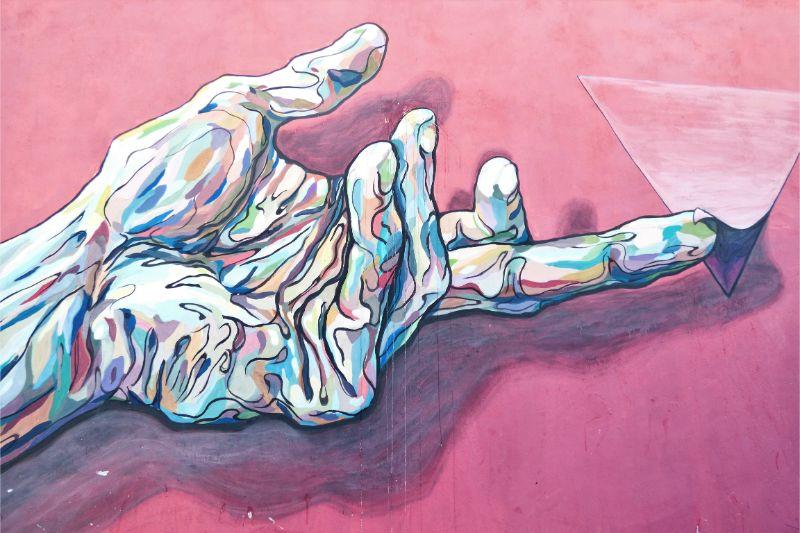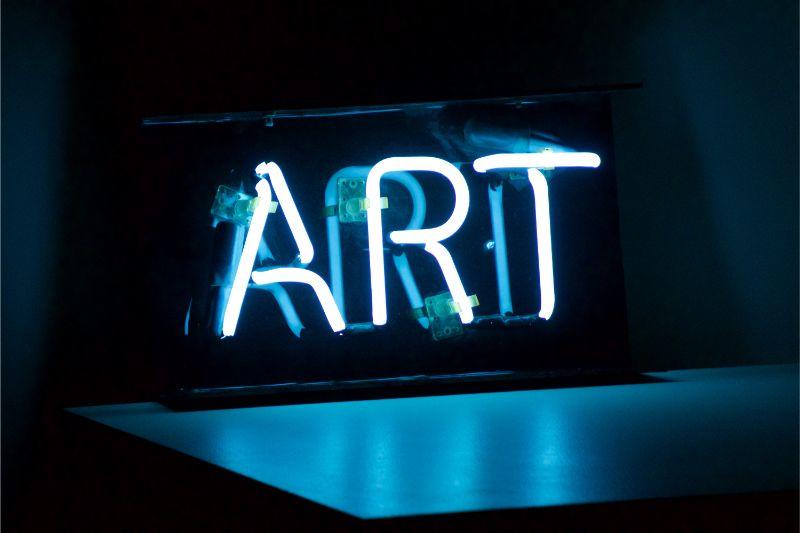Surrealism is an artistic movement that developed after World War I and flourished right until World War II. The core focus of Surrealism was positive expression.
Most surrealist paintings were deeply inspired by Freud’s theories whereby the unconscious state of mind was seen as being part and parcel of the world we imagine. According to a group of painters who were known as surrealists, our inner truth was only seen and shown when people learnt how to surpass the conscious mind and tap into the subconscious mind.
It was the subconscious mind that allowed for the true expression of humans and thus surrealists resorted to creating paintings that reflected this ideology. The thing about most surreal paintings is that they made the viewer of the painting feel slightly awkward and uncomfortable. The unease felt by the viewer was mainly attributed to the fact that surrealists drew inspiration from earlier painters who painted grotesque images.
From the grotesque depiction of the subconscious mind to the expression of true emotion on a canvas, when these painters painted, they showcased in their work their ability to paint what was physically investigated.
While you may have gotten a gist of what surrealism is, you can explore the concept even further if you choose to take up art classes (either online or face-to-face classes).
Are you interested in learning more about pop art? If so, read our blog post that explores how pop art changed the face of art.


Core Features of the Surrealism Era
To establish what the core features of surrealist paintings were, we need to look at all of the surrealist paintings painted in this era and compare them to one another as well as explore them alongside the premises of Sigmund Freud's theory. According to Freud's theory as mentioned in his book entitled Interpretation of Dreams, he puts forth the viewpoint that both dreams and the unconscious mind plays a key role in producing the emotions that people feel. The movement went a step further to consider the fact that what was reflected in the subconscious mind was actually a vital part of our humanity.
All surrealist paintings reflected the following core features:
- The paintings were created solely from the painter's imagination and from dreams. Hence the inspiration for each painting was derived from the subconscious mind. It depicted the idea that thoughts from the subconscious mind was spontaneous.
- The paintings produced grabbed attention instantly since they were unlike any other paintings seen before. The images were meant to be somewhat uncomfortable or unsettling to look at. Upon closer inspection, it seemed like the images presented in these paintings were almost dream like. Most images painted were that of distorted figurines and comprised of unusual shapes.
- The paintings reflected the mind of the artist as well as included a sense of what may have happened and what has happened in their lives. Many labelled the paintings of this surrealism era as a form of personal autobiography.
- Many surrealist artists chose a simple item and then reflected this item in most of the images they painted. Like if an artist chose to paint an egg, the egg was repeated several times in many of their artworks. Unusual juxtapositions of these items were also a noticeable feature of these paintings.
- Paintings gave voice to the subconscious mind which was free from all the social conditioning and taboos that prevented artists from expressing themselves freely on the canvas. It was the artists way of visually playing with words.
- The movement was characterized by freedom and as such paintings showcased the bizarre and unexpected. Random and unexpected techniques were also used for these paintings.
- This movement somewhat set the tone for movements that followed the surrealism movement.
Explore some of the highlights of contemporary and modern art by reading this blog post.

Surrealism Artists
Dali
Salvador Dali was one of the most popular surrealist artists of his time. Dali produced artwork that reflected most of the core characteristics of the surrealism movement. Dali focused on using repeated themes that would feature in his work. He was an artist who reflected objects like eggs and water and these objects would constantly be repeated in a particular painting or in several paintings.
Dali was an art student and he studied art in Madrid and Barcelona. This was after he showed interest in art from an early age.
The main aspect about Dali that came across in the paintings that he created as well was his strong personality. Everything from his art to his eccentric dress style made him a working piece of art. He believed that he was surrealism itself.
It was Dali who showed a sense of maturity in the paintings he produced. He could paint a dream-like state with unconventional juxtaposition. His paintings did sometimes reflect forms of deformity. Dali was a firm believer that surrealist artworks were the subconscious minds of all humans echoed with repressed themes of sexuality, death and identity.
Dali's Top Artworks: The persistence of memory (1931), The Great Masturbator (1929), Christ of Saint John of the cross (1951), The Burning Giraffe (1937) Lobster telephone (1936)
Birthplace: Figueras, Spain
Lifeline: 1904 - 1989
Art Style: Surrealism,
Art Forms: Painting, sculpting, Film making.
If you too would like to paint just as maturely as an artist like Dali, consider taking up art classes and learning with experienced art tutors.

Surrealism Art
Arriving on the art scene in the 20th century, surrealist artworks were considered an avant-garde art form that expressed a dreamlike state. The movement itself was believed to have been inspired by a movement called Dadaism. The sole focus of the Dadaism movement was also on unconventional art styles and displaying visual irony.
'The Great Masturbator'
Ultimately, it is clear that the surrealist artist, Salvator Dali produced paintings that often made the viewer feel slightly uncomfortable. It was this painting, "The Great Masturbator," that evoked the idea that sex and sexuality were also enforced by the subconscious mind.
In the painting, The Great Masturbator, Dali depicts weird body figures. Many people believe the lady figure in the painting bore a strong resemblance to Dali's wife, Gala.
While you may feel a tad bit uncomfortable looking at this painting, you can't help being transported to a dream-like state just by looking at the painting.
'The Broken Column'
The Broken Column was painted by the artist called Frida Kahlo. This Mexican painter became well-known for her auto-biographical paintings. This painting, "The Broken Column," reflects Kahlo's personal struggle with disability. At the age of six, Frida Kahlo contracted polio which left her with a limp.
Thereafter she met up in an accident in which a metal piece pierced through her pelvis leaving her paralyzed for life. It is in this painting that she seems to be wearing a neck brace. Also, in the portrait, there appears to be many needles which seem to be piercing through her body.
The artist stayed true to her Mexican roots in all her paintings by either reflecting Mexican cultural clothing or bright colours. The artist also had the ability to strike up unsettling feelings in those who viewed her paintings.
Surrealist Art
Now that you have had a taste of some of the bizarre and strange artworks from the surrealist movement, you may be wondering which other surrealist paintings you need to explore to be in the loop of all of the characteristics of this artistic movement.
Below is a list of paintings that are worth catching a glimpse of:
- Object in Fur by Meret Oppenheim
- Birthday by Dorothea Tanning
- Carnival of Harlequin by Joan Miro
- The human condition by Rene Magritte
- Mama, Papa is wounded by Yves Tanguy
- The accommodations of desire by Salvador Dali
- The palace at 4 a.m. by Alberto Giacometti
- Battle of fishes by Andre Masson
- Luncheon in fur by Meret Oppenheim
- The barbarians by Max Ernst
- Mannequin by Man Ray
- Henry Ford Hospital by Freida Kahlo
- The Philosopher's Lamp by Rene Magritte
If you can get past how uncomfortable and slightly on edge some surrealist paintings make you feel, you will understand that the movement was actually necessary to put forward artworks that were expressionless expressions.
The exploration of the subconscious as depicted by surrealist paintings mean that you need to look closer into the painting to really understand it. Not only did the movement allow painters to freely splash the subconscious mind on a canvas, and to create a new experience for the artists, but the movement also created a new interpretation of art for the viewer.
If you are taken aback by this art movement, you should get in touch with a Superprof art tutor today who will help you explore the art, the message conveyed through the painting, as well as the artistic techniques used to create an unusual juxtaposition of objects.
A private art tutor could also help you distinguish between impressionism and expressionism.
Résumer avec l'IA :















